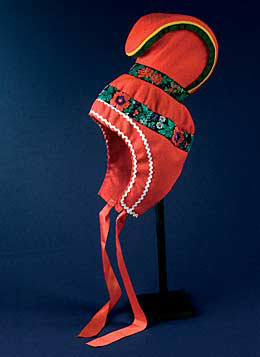Conversion to Christianity began some time in the 1500’s which is evident from the Lapland tax records in Kemi. Kemi-Lapland included seven Lappish villages of which Inari was the northernmost. Inari belonged then to a freely taxable district and the taxes were carried from Finland-Sweden, Denmark-Norway and Russia. Taxation was delegated by the King to Lapland bailiffs. In 1570, the Swedish tax bailiff had 17 taxpayers on his register six of whom already had Christian names. These first Christians in Inari were Matti Kuuvanpoika, Knut Sarrenpoika, Petteri Pilsanpoika, Harald Aikasaarenpoika, Antti Kuuvanpoika and Matti Ikäpäivänpoika. Christianity reached Inari between 1620 and 1630 and the first church was built at Pielpäjärvi in 1646. All Inari Sámis were baptized by 1661, but in 1669 the Inari Sámis testified to have abandoned the pagan belief already 1630-1646 when Vicar Johan Pictorius from Kemi had threatened them to eternal damnation and hell fire. After Pictorius Inari got its first preacher, the famous Esaias Mansveti Fellman, who moved to Inari, was a priest in Inari by 1660. In 1662, after Esaias Mansveti Fellman moved to Kemi Gabriel Tuderus began to function as priest in Inari and elsewhere in Kemi-Lapland, who began to convert the pagans to Christianity with an iron fist. Word got around about “that priest of nobility Tudorus, who hates both land and Lapland.” He served in his function quite long until his death in 1705 after which H. Cajanus was appointed Vicar of the Kemi-Lapland parish. In 1747 Inari and Utsjoki were combined as one parish and had an assistant vicar was ordained as priest there. In 1881, Inari became an independent parish but did not have a priest until 1888.
The Effects of Christianity The teachings of Christianity began to bear fruit among the Inari Sámis to the effect that already in the 1700’s it was said that Inari Sámis were far beyond others as far as Christian virtue was concerned; so much so that Norwegian Thomas von Westen, who was called the apostle of the Sámis, was said to have acclaimed the Inari Sámis as the best Christians in all Sámi Land. Utsjoki Vicar Jacob Fellman also praised the Inari Sámis for their hymn singing abilities which was in his opinion much better than the Utsjoki Sámis and said that the father of an Inari Sámi family used to read the book of homilies at home every Sunday and that they were an example to others in the use of alcohol. Also the famous language researcher Matias Aleksnateri Castren said in the beginning of the 1800’s that Inari Sámis were in their faith and manners much superior to the Northern Sámis, but also admitted that this could have been because the Northern Sámis did not understand Finnish as well, which was the language of the Christian teachings in those days. When the Inari Sámis had been completely converted to Christianity, Turku University assistant Master of Arts Johan Ervast wrote in his app. 1730’s Latin language dissertation, “But the citizens of Inari, though they live by that far-away lake, are the most pliable and receptive, and due to this are to be placed above all others.” Earlier Vicar Gabriel Tuderus had also born witness that “the village of Inari greatly excels the other mentioned villages in knowing God and in Christian living, in that in all the arts of the devil which they had absorbed from their forefathers and favored, with the help of the esteemed Johan Pictorius in his time already abandoned and now do hate and disparage those arts of the devil.” The yoik tradition was an essential part of pantheism or pagan belief and when an Inari Sámi became Christian, he voluntarily relegated yoik to the dust heap of history. All primitive peoples had had, and a few peoples still have their own yoik tradition. For Inari Sámis, it is “livđe”. During the last years tens of recordings have been found from a few national archives from which the message of the livđe from the beginning of the last century has been discerned, but whether it is really the same, since livđe is from the pagan times, is not certain. The disappearance of pantheism thus took with it the yoik tradition and possibly other ways which we do not have clear knowledge, but one good thing should be mentioned: vain fears and superstitious rituals also disappeared which evidently did not have any discernible use. A good thing about the coming of Christianity that should also be mentioned is that priests began to register peoples’ births, baptisms, marriages and deaths. We can assume that the Inari Sámis participated in pantheistic rituals with as great devotion and seriousness as they did later with Christian rituals and in this way, virtue has been crystallized, as with Christianity later as well. An old saying tells that everyone becomes blessed through faith. A significant effect that came with Christianity was in that sinfulness was expressed, even without the person’s really even knowing what sin really was and how it is committed. In compensation a promise of eternal life was given on the condition that he no longer commits sin, i.e. that he “behaves himself”. This kind of person who did not commit sin has been always been ideal in terms of a market economy bureaucracy. A religious person is law abiding and loyal to authorities. He accepts without grumbling everything, even the heaviest decisions and ordinances. Ilmari Mattus
|
|
